Anyone notice anything peculiar about the two images of Lewis Powell in my last post? Anything at all? Other than, of course, the fact that one of them had been colorized, making it appear unsettlingly contemporary? Because they are, to be sure, very unusual images.
There’s really nothing else like them in all of recorded history – except for, that is, the remarkable images that also exist of most of his alleged co-conspirators. And perhaps it is time for us to now meet those alleged conspirators, beginning with the rather dashing gentleman pictured below, Mr. Samuel Bland Arnold, who looks almost like he could be a 21st century actor posing for a publicity photo for his latest blockbuster film.

Arnold was thirty at the time of the assassination and was working as a commissary clerk at Fortress Monroe, Virginia. He was said to be a former Confederate soldier, though it seems very likely that he was actually a Union operative (as appears to be the case with almost all of Booth’s alleged accomplices). The files of the Bureau of Military Justice (a misnomer if ever there was one) contain the following tidbits of information on Arnold:
“Samuel B. Arnold was born at Georgetown, D.C., of highly respectable parents … He was first sent to be educated at Georgetown College, from there he was sent to the Reverend J.H. Dashills, [in] Baltimore County, his parents having removed from Georgetown to Baltimore. He was one year in Rockingham County, Virginia, under the charge of the Reverend Mr. Gibbins, and afterward sent to Saint Timothy Hall, Catonsville, Maryland, and place[d] under the Rev. L. Vanbakelin.”
The picture painted here is of a well educated young man who had a rather privileged upbringing in and around the nation’s capital. Not at all the kind of guy you would expect to have donned a Confederate uniform, unless he did so as a covert Union operative. Arnold was convicted of complicity in the plot to kill Lincoln and was handed a life sentence by the military tribunal. He served only four years though before being pardoned by President Johnson and released in 1869. Arnold lived to the ripe old age of seventy-two, passing away on the autumnal equinox of 1906.
Next up is Michael O’Laughlin (or O’Laughlen – the two are used interchangeably throughout the literature on the assassination), who, like Arnold, was a ruggedly handsome, well dressed young man from a well-to-do family. Just twenty-four when Lincoln was shot, O’Laughlin had known Booth since childhood, when they had lived across the street from each other in Baltimore (Arnold had also been a childhood friend of Mr. Booth). The Bureau of Military Justice files reveal the following about O’Laughlin:
“Michael O’Laughlin was born in the City of Baltimore … He was educated at a School conducted by a highly respectable Teacher at the corner of Front and LaFayette Sts., and after leaving School learned the trade of ornamental Plaster work, and also acquired the art of Engraving. The company he was in the habit of associating with was not of a character that a person indisposed to evil would have made choice of. His appearance was generally of a genteel character.”

In 1865, O’Laughlin was working for his older brother as a clerk in a Baltimore feed store. That brother, according to government files, was a member of the Knights of the Golden Circle. Testimony before the military tribunal indicated that Michael likely was as well. Convicted by that tribunal, O’Laughlin was given a life sentence, which proved to be a death sentence when he contracted yellow fever in prison and died, strangely enough, on or about the autumnal equinox of 1867. His remains are interred in the same Baltimore cemetery where Arnold and Booth can be found.
Like Arnold and O’Laughlin (and Booth), David Edgar Herold (frequently identified in print as David Herald) was a well educated young man from an upscale family. Herold was born in Maryland and raised in – where else? – Washington, DC. His father was the chief clerk at the Washington Navy Yard store – the same Washington Navy Yard whose guarded bridge Booth and Herold were inexplicably allowed to cross on the night of April 14, 1865.
Herold attended Georgetown College, followed by the Rittenhouse Academy and then the prestigious Charlotte Hall Military Academy. He later went to work for various pharmacists and doctors, including our old friend “Dr.” Francis Tumblety. On one occasion in 1863, when he was dispatched to the White House to deliver a bottle of castor oil, Herold had the honor of personally meeting President Lincoln.


Tried along with seven of his alleged co-conspirators, Herold was found guilty and sentenced to death by hanging. That sentence was carried out on July 7, 1865, just after Herold’s twenty-third birthday. He is, as would be expected, buried in the Congressional Cemetery in Washington, DC.
Thus far we have met four lads (Booth, Herold, McLaughlin, and Arnold) who all were raised in and lived and worked in the Baltimore/Washington DC area. Considering that the conspiracy to kill Lincoln, to the extent that it is acknowledged at all, is invariably cast as a Confederate conspiracy, there don’t appear to have been too many southerners in the crowd. There was at least one though – our old friend Lewis Thornton Powell.
The youngest of the alleged conspirators – just twenty at the time of the assassination – Powell was also known as Lewis Paine, Lewis Payne, Reverend Wood, The Reverend, James Wood, Mosby, and Kincheloe, among other aliases. As his shadowy identities would seem to imply, he was by many accounts an intelligence operative. Raised in Alabama, Georgia and Florida, Powell was educated by his father, the Reverend George C. Powell.
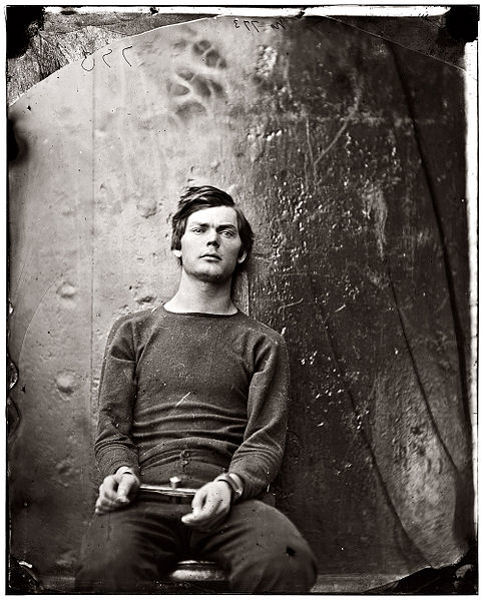
Lewis entered the service at a young age – either sixteen or seventeen, depending upon the source. Powell’s two older brothers enlisted as well, with all three serving with the 2nd Florida Infantry. Lewis was the only one of the three to survive the Civil War. Wounded at Gettysburg in early July 1863, he was taken prisoner and sent to a POW hospital. Following his recovery, he was put to work as a male nurse in a hospital in Baltimore, from where he reportedly escaped, apparently by basically walking out the door.
After that, according to historian Theodore Roscoe (The Web of Conspiracy), his “movements are hard to follow.” Author Jim Bishop added, in The Day Lincoln Was Shot, that “There is an unexplained hitch in his [military] records.” According to various accounts, he went to work with the paramilitary forces serving under John Singleton Mosby. In January 1865, he turned up in a boardinghouse in Baltimore, Maryland and allegedly became a Lincoln assassination conspirator. On July 7, 1865, he was hanged.
There is scant evidence that Powell knew Booth at all, though an apocryphal tale is often told of a very young Lewis meeting Booth in a theater following a performance by the acclaimed actor. There doesn’t appear to be any evidence at all linking him to the other alleged conspirators. He photographed really well though.
Moving back up north, we next meet the hapless Ned Spangler, also known as Ed Spangler, Edward Spangler, Edman Spangler, and Edmund Spangler. The oldest of the alleged male conspirators at thirty-nine, Spangler was a journeyman carpenter originally from Pennsylvania, though he had spent the majority of his life in the Baltimore area. During the Civil War, he was living in Washington, DC, where he was employed at Ford’s Theater as a carpenter and stagehand.
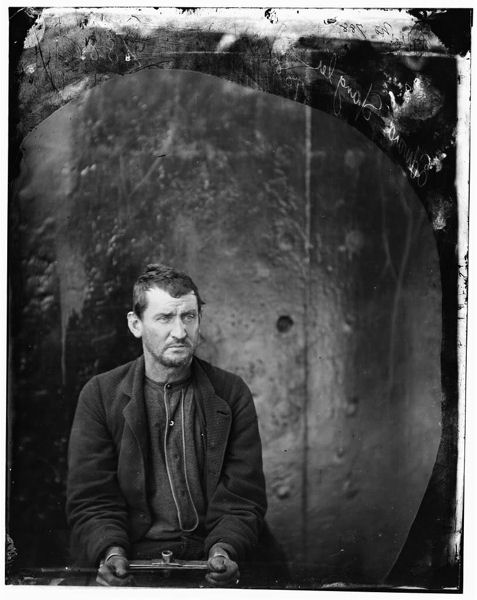
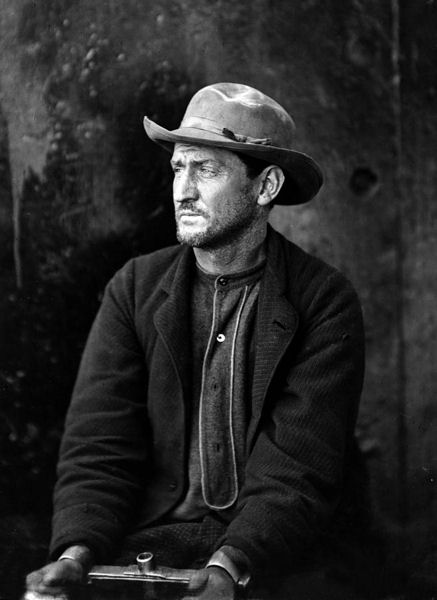
Spangler had met Booth many years earlier when he worked on the Booth family’s Tudor mansion. In the aftermath of the Lincoln assassination, he was accused of holding Booth’s horse and aiding and abetting the actor’s escape from the theater. The charges though were dubious at best. Sentenced to a six-year prison term, the most lenient sentence handed down by the military tribunal, he was pardoned four years later by President Andrew Johnson. Spangler died on February 7, 1875, reportedly of tuberculosis.
Next up is the only foreign national in the group, George Andrew Atzerodt, who was brought over to America from Germany when he was eight. Raised in, of course, Maryland, Atzerodt and his brother owned a carriage repair shop where George worked as a painter. At the time of the assassination, he was twenty-nine.
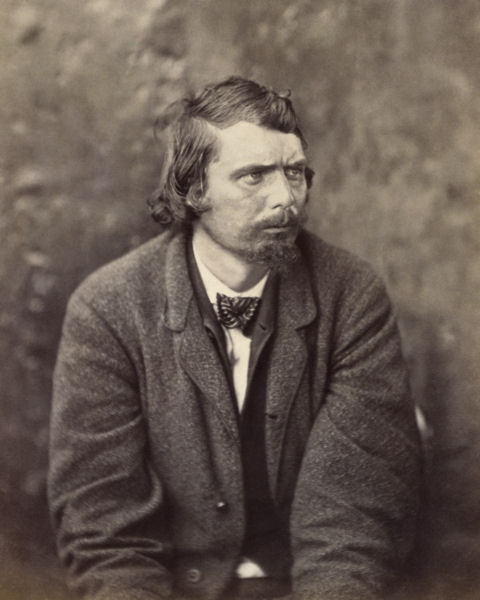
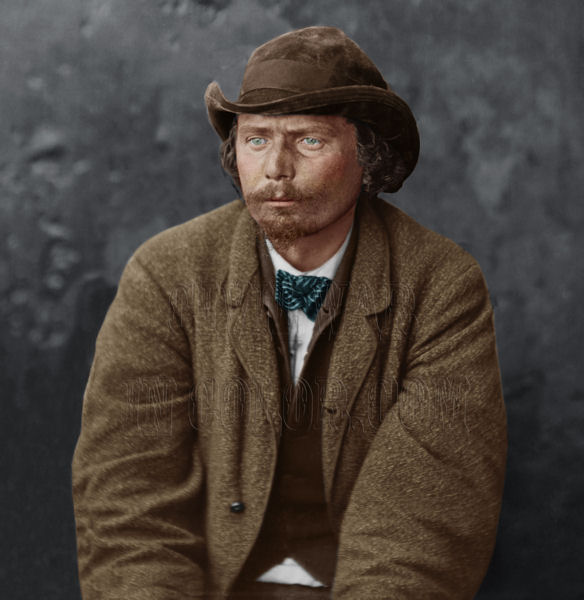
The military tribunal maintained that Atzerodt had been assigned the task of assassinating newly-installed Vice President Andrew Johnson, but he had allegedly lost his nerve and failed to carry out the assignment. In truth, there is no real evidence that Johnson, who was likely involved or at least had knowledge of the plot, was ever targeted. As with Stanton, this was a case of the conspirators themselves claiming to be intended victims. Atzerodt was found guilty of his alleged crimes and was hanged on July 7, 1865.
The seventh of the alleged conspirators was Dr. Samuel Mudd, yet another Marylander. Like many of the others, Mudd was born into a large, well-to-do family and he was well educated, having graduated from both GeorgetownCollege in DC and the medical school at the University of Maryland in Baltimore. Mudd worked as both a country doctor and a tobacco farmer, and was reportedly a slave owner who harbored southern sympathies.
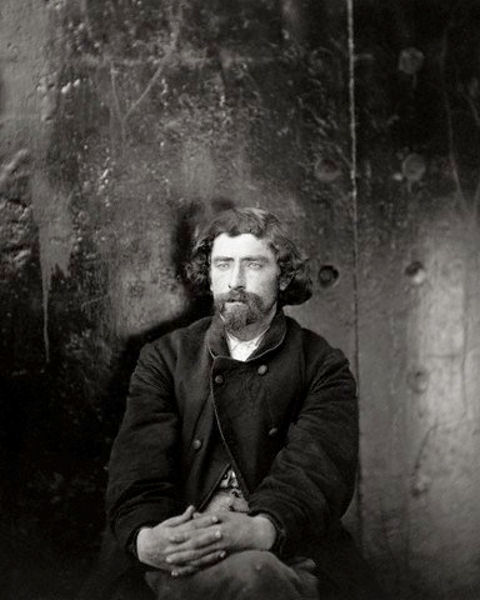
Mudd, thirty-two at the time, stood trial along with the others on charges of having aided and abetted Booth’s plot and having offered medical aid to the injured actor. His actual role has been fiercely debated by mainstream historians, all of whom have grossly misrepresented the Lincoln assassination. Convicted by the tribunal, Mudd was sentenced to life in prison but was pardoned just four years later by Johnson.
Having now met seven of the nine people who stood trial as Booth’s alleged co-conspirators, is there anything that stands out as unusual about the images adorning this post? Anything at all? And keep in mind that these are official booking photos, otherwise known as mugshots. But they certainly don’t look like any other mugshots ever taken. We certainly have no such images of Lee Harvey Oswald. Or Sirhan Sirhan. Or Charles Guiteau. Or Leon Czolgosz. Or James Earl Ray. Or John Hinckley. Or Mark David Chapman. Or any other alleged assassin or attempted assassin. Or anyone ever arrested on suspicion of having committed any crime.
No one else, you see, had one of the top professional photographers of the era come by to take their mugshots. No one else had the benefit of dramatic backdrops, professional lighting, and flattering poses and camera angles. And no one else was photographed by the very same guy, Alexander Gardner, who was long credited as being the guy who took the last known images of President Abraham Lincoln.
When called upon to photograph the people accused of plotting against that president, Gardner certainly rose to the occasion. The images of the alleged Lincoln conspirators are arguably the finest work that the Civil War photographer ever did. The portraits of the conspirators’ victim, taken not long before Lincoln’s death, are rather lackluster in comparison.
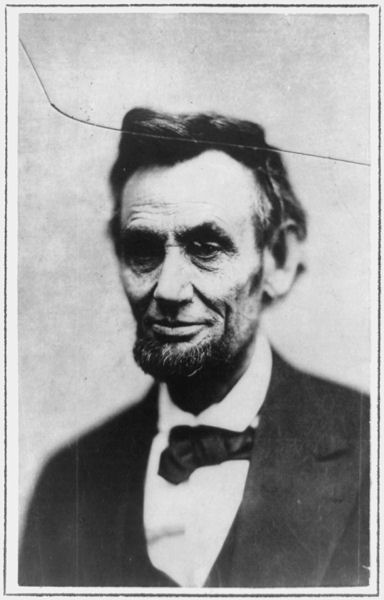

The very same Alexander Gardner was also the guy who, just weeks after lovingly photographing the alleged conspirators, photographed several of those same conspirators being led to the gallows and hanged. And the guy who officially photographed Lincoln’s funeral. And the guy who took the only image of what was claimed to be the body of John Wilkes Booth, after the actor had allegedly been gunned down and transported back to Washington.


Left to right: Mary Surratt, Lewis Powell, David Herold, and George Atzerodt
That image though won’t be displayed here, for reasons explained by author W.C. Jameson (Return of Assassin): “Following the work of the identification committee, the body was photographed by Alexander Gardner, one of the members. Gardner conducted his work in the presence of War Department detective James A. Wardell. Gardner was allowed to take only one photograph and was quickly hastened to a darkroom to develop it. Wardell stood by his side the entire time, and when the picture was finished, Wardell took possession of it, along with the plate … Moments later, Lafayette Baker took the photographic plate from Wardell. In response to subsequent inquiries, the government denied that any photographs were ever taken of the body … To this day, no one knows what became of either the picture or the plate.”
Theodore Roscoe adds that, “Undoubtedly Gardner gave the glass plate to Lafayette Baker or to Stanton. But the Secret Service Chief made no mention of it in his history. Stanton never mentioned it. War Department records are absolutely silent on the subject. The photograph never reached public domain.”
Nothing unusual about any of that. Returning now to the collection of the world’s most glamorous mugshots, it should be noted that there are, beyond their mere existence, other curiosities concerning these photos. Like the fact that the photo of Dr. Mudd that was officially released, and presented above, isn’t actually Dr. Mudd at all. It appears to be Hartmann Richter, a cousin of George Atzerodt who was never charged with any complicity in the assassination plot. The real Dr. Mudd is pictured below.
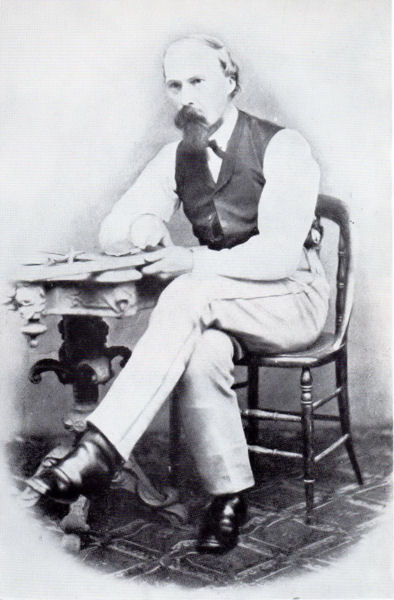
And then there is the guy in the next image, officially photographed as a conspirator yet never charged, tried or even identified. The government just pretended as though he never existed.

The appearance of the alleged conspirators in these striking images stands in stark contrast to their treatment throughout their confinement, which can only be described as barbaric. The suspects’ ankles and wrists were kept shackled at all times. They were forced to wear specially-designed heavy leather hoods at all times other than when they were in court. The hoods were very tightly fit and featured pads that put tremendous pressure on the prisoners’ eyes, causing intense pain in addition to subjecting the wearers to extreme and prolonged sensory deprivation. Some of the prisoners were also fitted with iron collars attached to a heavy ball and chain. These also had to be worn at all times.
All suspects were confined to tiny solitary cells outfitted with just a thin straw mattress, a worn army blanket, and an open bucket to use as a toilet. They were allowed no visitors and their guards were even forbidden from speaking to them. Armed sentries kept watch at all times to ensure that the prisoners had no human interaction whatsoever. Each suspect was assigned to a cluster of three cells, insuring that they had no neighbors to interact with. It was widely rumored that they were being tortured in more overt ways as well, which was undoubtedly the case.
No attorneys were provided for the defendants; they had to retain their own counsel, despite being completely cut off from the outside world. Consequently, some of them began the proceedings with no representation. Even after obtaining counsel, they were not allowed to have any private consultations with their attorneys. And they were not allowed to testify or speak in court at all, nor could any statements made by them be introduced.
But other than all that – and numerous other factors, which will be discussed later – the conspirators were given a fair trial. Let’s now close out this edition by meeting the last of the alleged conspirators who were tried by military tribunal – the one who, without explanation, was not photographed by Mr. Gardner. That would be, of course, Mary Surratt, the first woman to be executed in these United States.
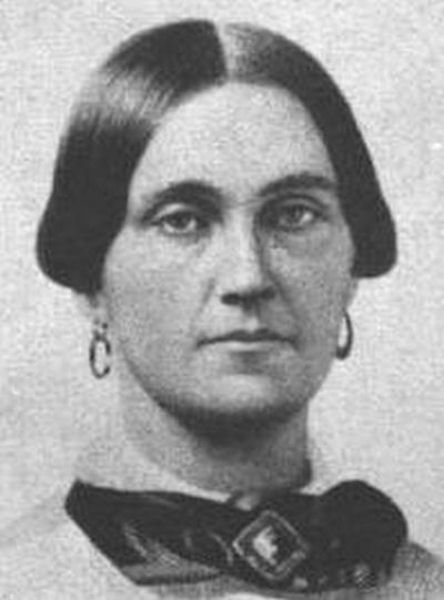
Surratt was, shockingly, a native Marylander from a rather wealthy family. Born sometime in the early 1820s (no one seems to know exactly when), she was educated at a private Catholic boarding school in Alexandria, Virginia, at a time when, as Theodore Roscoe noted, “higher learning for females was frowned upon as radical.” At fifteen (or sixteen, or nineteen), she married John Surratt, with whom she had three offspring, Isaac, Anna, and John, Jr.
The Surratts did well for themselves for a number of years. At one time, John owned as many as 1,200 acres of land and a number of businesses, including a hotel, a tavern and a boardinghouse. Much of that land straddled the border between DC and Maryland, just thirteen miles from downtown Washington, DC. The settlement there soon came to be known as Surrattsville, which is frequently claimed to have been heavily involved in Confederate espionage activities.
Spymaster Lafayette Baker, accompanied by some 300 Union soldiers, converged on Surrattsville in late 1861 to launch a full investigation of the Surratt family and various others suspected of involvement in the Confederate underground. According to pseudo-historian Roy Chamlee, Jr. (Lincoln’s Assassins), Baker’s team unearthed compelling evidence of a vast network of covert Confederate operations. They made though only a few token arrests, which, given that thousands elsewhere were rounded up by Baker’s thugs in mass arrests based on far less evidence than what was found in Surrattsville, strongly suggests that the operations in Surrattsville weren’t actually aimed at aiding the south,
In any event, John Surratt died in 1862 and his widow fell upon hard times. She was nevertheless able to finance a costly move to the heart of DC in late 1864, taking possession of a boardinghouse just four blocks from Ford’s Theater. It was in that boardinghouse that Booth and the others allegedly plotted first the kidnapping of, and then the assassination of Abraham Lincoln. Found guilty by the military tribunal, Mary Surratt was hanged on July 7, 1865.
… to be continued

This is fascinating work from Mr McGowan…I wish I had discovered his work sooner. Thank you
Mr. McGowan has done yeoman work in this series and he introduces material I have seldom seen elsewhere and he has asked questions that needed to be asked, for which I have never seen answers anywhere.
If you enjoy Dave’s Lincoln Assassination series, take a look at his Newsletter 39.
Dave did a “Wild West” article on Jesse James. A very interesting & thought provoking newsletter which indicates Jesse James was actually the head of the Confederate Underground for about 20 years after the Civil War officially ended.
https://centerforaninformedamerica.com/newsletter-39/?unapproved=10274&moderation-hash=724bb959f6b7eac84f032bfe422a84a7#comment-10274